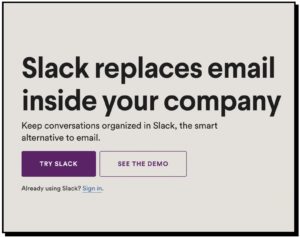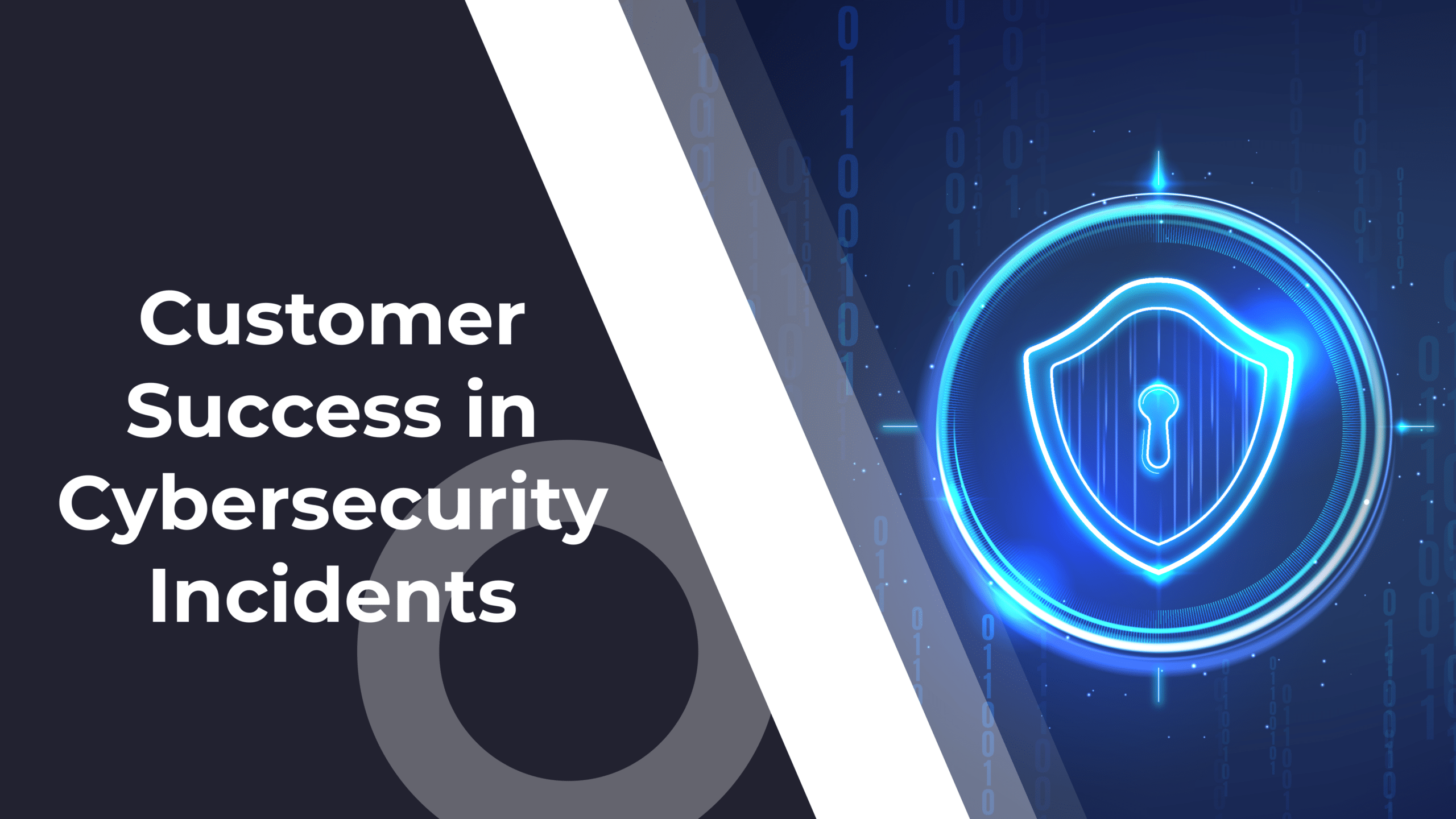We live in a time with markets more competitive and saturated than ever. Many products and services are just mere imitations of others – so how to stand out? Crafting a compelling value proposition is one of the key elements for your business to stand out.
Without a strong value proposition that hooks the customer, your business will seem no different from the competitors.
Generic value propositions make you miss out on opportunities as prospects flock toward brands that speak to their needs more directly.
A well-written value proposition is all about establishing a framework, and creatively expanding on it to drive more leads to your business. Let’s dive into its building blocks.
What is a Value Proposition?
The core of every successful business is a clear and engaging answer to one key question:
What’s in it for me as a customer?
This is exactly what a value proposition should aim to communicate.
The value proposition isn’t just an exhaustive list of product features. It’s a benefit-driven statement that explains why someone should choose your business to solve a specific problem. Ideally, it should stand out by focusing on the unique value you can provide better than anyone else.

Without a strong value proposition as your foundation, your marketing efforts are like a car with no engine – spinning wheels without ever gaining traction. When you nail it, you’ll have a powerful lead magnet toward your business.
Common examples and case studies:
For instance, Slack positions itself as the tool that “replaces email inside your company,” emphasizing efficiency and streamlined communication. This resonates with teams overwhelmed by email overload, offering them a solution to collaborate more effectively.

Another popular example is Tesla. Their value proposition is not just about electric cars but about “accelerating the world’s transition to sustainable energy.” This broad mission appeals to environmentally conscious consumers who want to be part of a larger movement, not just own a car.
Custify, a customer success platform, highlights its value proposition by focusing on real-time customer management. They emphasize how their tool allows businesses to manage customer relationships more efficiently, reduce churn, and ultimately increase customer lifetime value. This resonates with SaaS companies looking to optimize their customer success efforts and grow revenue.
Why is a Value Proposition Important?
A value proposition is crucial for customer acquisition and retention. It serves as the foundation for your marketing strategy, clearly communicating the benefits of your product or service.
An effective value proposition helps build trust, differentiates you from competitors, and ultimately drives business growth by aligning with the needs and desires of your target audience.
How to Write a Winning Value Proposition
Writing a winning value proposition requires a combination of copywriting craft and data science. Deep audience insights must be combined with on-point messaging that hits the right pain points. Let’s walk through the key steps.
Know your target audience: How Leading Companies Tailor Their Value Propositions
To effectively craft a value proposition, understanding your target audience is paramount. Don’t just look at surface demographics – work to understand the mindsets, personalities, and motivators that shape their behavior.

Take a page from companies like Apple and Nike—both excel at tapping into the emotions, values, and desires of their customers. Apple’s value proposition speaks directly to those who prioritize design and user experience, while Nike zeroes in on the drive to achieve personal greatness.
Actionable Tips:
- Gather Customer Data: Use tools like surveys, focus groups, and analytics to build detailed customer personas.
- Analyze Behavior: Platforms like Google Analytics can help you understand your audience’s online habits, making it easier to tailor your messaging.
Find their pain points: How to Spot and Address Customer Challenges
With a clear picture of who your audience is, you can start outlining the recurring problems, challenges, and frustrations they want to resolve. These pain points are their main antagonists, creating stress and inefficiency in their day-to-day lives.
Some common customer pain points businesses often look to solve are:
- Wasting too much time or effort on repetitive and tedious tasks that prevent focus on higher priorities
- Being set back by disconnected systems and a lack of centralized data
- Not being able to accurately track and measure performance, ROI, and key goal results
Understanding your customer’s pain points is crucial to crafting a value proposition that resonates.

Case Study:
- HubSpot recognized the struggle of managing multiple marketing tools and created a unified solution that directly addressed this issue, positioning themselves as an essential tool for marketers.
It’s not enough to just provide relief to these struggles. You want to motivate your customers to seek out your solution.
Maybe it’s the appeal of working smarter, not harder while freeing up time for what matters, or maybe it’s the straightforward nature of centralized analytics software.
Offer Targeted Solutions: Structuring Your Value Proposition for Maximum Impact
Once you have the critical needs and desires mapped out, you are ready to communicate how your business can deliver the results.
A great way to do this is to start with the core problems, pain points, and frustrations your customers face. The more vividly you can empathize with their struggles, the easier it is to position your offering as the solution.
And once you understand your customer’s pain points, the next step is to craft a solution-oriented value proposition. Use a simple structure: Problem > Solution > Benefit.
For example, let’s say that your customers face a problem of building lists of high-quality leads. To have a high-quality list, you need to know the ways to find email addresses and contact details that are verified, and doing this manually can be time-consuming work.
In this case, finding a great email finder solution that helps you find valid email addresses with an extensive database is the main goal. Hunter is a good solution for this task, and they clearly outline this on their homepage:

Notice how “In seconds” is highlighted. This company knows that having a quick solution wins in this market segment, and they highlight it to differentiate themselves from the competition.

Instead of just listing the features, it is worth having a Q&A section where a company can address all the burning questions and provide all the answers – which can prove that your company has the right solution.

Don’t forget to leverage social proof, as 84% of customers trust reviews as much as their family and friends. Having a real-world testimonial that outlines how your business solved their problems is an appropriate icing on the cake.
Emphasize how you differ from competitors
You should know your customers, but knowing your competition is even better in setting your business apart.
Let’s face it – many businesses today get ahead by imitating their competitors; meaning that a huge part of businesses are inherently similar.
Your job is not just to state what you offer – you need to make it unmistakably clear how your business is better than the other available options.
First, you should conduct an exhaustive competitive analysis to identify strengths, advantages, and value that you can provide to your potential customers. Competitive analysis is crucial for understanding where your business stands.

Case Study:
- Trello sets itself apart in the project management software space by offering a visually intuitive and user-friendly interface, making project management accessible even to non-technical users.
Checklist for Identifying Unique Selling Points (USPs):
- Analyze Competitor Offerings: What do they lack that you provide?
- Identify Strengths: Highlight features that give you a competitive edge.
- Position Your Brand: Clearly articulate how your solution is the better choice.
Whatever it is that makes your offer distinctive – find creative ways to integrate that into your value proposition message and positioning.
Use a template for brainstorming
Struggling to combine all of these pieces to craft a clear and compelling value proposition copy?
There are proven messaging frameworks that can provide a helpful structure to work within while allowing your unique angle to speak for itself.

One of the most successful value proposition templates is oriented toward solving the pain point. This one works because it is specific about the benefits and what customer problems your business solves.

This value proposition template is all about outlining the desired outcome for the customers. This template works because you hook the customers with the outcome they want and then reel them in with your unique method of achieving that outcome.

Using one of these templates can help bring structure to your value proposition. Feel free to remix them to allow your distinct business advantages to be in the spotlight.
What are the Elements of a Value Proposition
While every value proposition comes in different shape and size, they all follow a couple of common elements that potential customers expect to see:

Let’s dive deeper into each of these elements.
Heading

The heading is the essential element of your value proposition. It has to instantly capture attention and engage the potential customers to continue reading.
An effective heading should concisely communicate the key benefit or a positive outcome the customer can expect by buying your product/service. It should have persuasive but straightforward language that directly ties into the audience pain points.
The goal of the heading is to make the promise of high value right from the beginning. Hone in on the functional or emotional benefits that resonate the most with your buyer personas.
Paragraph

Once you hook a prospective customer, the next section elaborates on the core solution by clearly explaining:
- What your product is in a nutshell
- Who your prospective user is meant to be
- Why is your solution positioned and capable of delivering on the benefit outlined in the heading
Continue with the persuasive but simple language that paints a picture of a promised solution in action. Remind the customers of the key pain points that your product/service can address.
The idea is to make it clear why your solution isn’t just a nice-to-have, but a must-have for a specific audience.
Visual element

As our brains process visual elements 60,000 times faster than text, adding a strong visual element to your value proposition is a powerful way to quickly elaborate on its key messages.
The goal for the visual element is to support and enhance the written message – not distract from it. When executed well, it can increase engagement and the memorability of your product/service.
For example, you can showcase the result of using your product/service that pictures how it addresses the pain points of the customer.
There are various formats you can utilize to achieve this, such as videos, animations, slides, or infographics. These elements should all share one thing in common – they should work closely with text components to communicate the full value proposition.
Testing Your Value Proposition
Even if you meticulously craft your value propositions with all the best practices in mind, sometimes, it just doesn’t achieve the goal you want. That’s not a cause for concern, as marketing is all about continuous testing and reiteration.
A/B testing is a powerful technique to validate how efficient is your current value proposition message and find areas for improvement. Create two versions that have one of the three core components slightly different. Then, you can serve each variant to different audience segments.
A/B testing can give you many quantitative insights related to your goals, whether it is more free trial signups or demo requests. If one variation consistently outperforms the other, you have a good data source to suggest optimizing in that direction.
Don’t focus only on the numbers. User feedback is equally important to inform the efficacy of your value propositions. Some good methods are:
- Surveys – Get direct audience feedback on what resonates with them the most, and the things you could improve.
- User testing – Observe how people engage with your value proposition.
The charm in testing is that you can always do it. And who knows? Perhaps the next variation will be better than the last one.
Examples of a Strong Value Proposition
Now that you have an actionable framework on how to write a winning value proposition, let’s see how the leading businesses craft them.
Custify

Custify is a customer success software that does its value proposition in a modular way. It clearly outlines what is the desired outcome of the software with its main heading – to manage customers in real-time.
Then, the modular structure comes forward, as a type of message that outlines the solution and its outcomes. In this case – this tool makes communication with clients efficient, which results in more actionable tasks and focusing on what matters. The message undertone is obvious – work smarter, and save time.
The visual aspect showcases how the user interface looks, which also serves as a hook for the customers.
Hunter

Hunter is an all-in-one email outreach platform that communicates its overall value proposition very well. With its heading, it uses color to hook the audience with the primary pain point – connecting with professionals. With “any”, it outlines that its database must be very extensive, which is a benefit to have.
The paragraph section clearly explains that this is not just an email finder tool, it is a collection of tools for email outreach, which is even more added value.
Finally, the visual element is an animation that showcases how the product works and what is the result – finding verified email addresses and contact info, being able to build email lists, and sending emails to prospects from these lists.
Zapier

Zapier is a popular automation platform that integrates with more than 6,000 web applications. The approach to animation in their value proposition makes their product instantly resonate with its target audience.
First of all, the heading it uses is dynamic and switches between different goals, which outlines the flexibility of the software. The paragraph section outlines the convenience that the platform brings to the table.
Finally, the visual element is an animation that can be toggled and outlines how many tasks are faster and more organized while using Zapier.
Common Mistakes to Avoid in Crafting a Value Proposition
Creating a compelling value proposition is crucial, but many businesses fall into common pitfalls that can undermine their efforts. Here’s what to watch out for and how to avoid these mistakes:
1. Being Too Vague
A vague value proposition fails to resonate with potential customers. Avoid generic statements like “We offer the best solutions” without specifying what makes your product or service unique. Instead, be clear and precise about the benefits you provide.
Example: A software company might claim, “Our tool helps you save time,” but a more compelling proposition would be, “Our software automates your invoicing process, cutting administrative work by 50%.”
2. Focusing on Features Instead of Benefits
Listing features rather than benefits is a common misstep. While features describe what a product does, benefits explain how it solves the customer’s problem. Customers care more about the outcomes they’ll experience than the technical aspects of your product.
Case Study: Apple’s value proposition for the iPhone focuses not on the technical specs but on how the phone will integrate seamlessly into the user’s lifestyle, offering convenience, connectivity, and security.
3. Ignoring the Competition
Failing to differentiate your product from competitors is a critical error. Customers need to know why they should choose you over others. Conduct thorough competitor analysis to identify and highlight your unique selling points.


Example: Epson and HP’s slogans, “Where there’s business, there’s Epson” and “HP: everywhere you do business,” are examples of what I call blandvertising. These slogans sound professional but fail to convey any real value or differentiation, leaving customers with a vague message that doesn’t stick.
The issue lies in the lack of a clear and forceful value proposition. A more impactful approach would be to emphasize specific strengths, like global reach combined with tailored IT solutions, which could resonate more deeply with their target audience.
4. Overlooking Customer Pain Points
A value proposition that doesn’t address specific customer pain points will fall flat. It’s essential to understand your customer’s problems deeply and speak directly to how your product provides a solution.
Case Study: Dropbox’s value proposition originally focused on solving the pain of file storage and sharing across multiple devices, a common challenge before cloud storage became widespread.
5. Failing to Test and Iterate
Even well-crafted value propositions can miss the mark if they’re not tested with real customers. Without testing, you might miss critical insights into how your message is received.
Tip: Use A/B testing to compare different value propositions and gather data on which resonates best with your audience. Customer feedback through surveys and interviews can also provide valuable insights for refinement.
Conclusion
A winning value proposition is the foundation of effective marketing that truly connects with your ideal customers.
When you showcase the core benefits of your business clearly and compellingly, you get an opportunity to stand out, capture interest, and position yourself as the right solution.
As you master this foundation, you will see more prospects convert into loyal customers and even brand advocates.




